Cortical and white matter substrates supporting visuospatial working memory
- PMID: 38552414
- PMCID: PMC11102300
- DOI: 10.1016/j.clinph.2024.03.008
Cortical and white matter substrates supporting visuospatial working memory
Abstract
Objective: In tasks involving new visuospatial information, we rely on working memory, supported by a distributed brain network. We investigated the dynamic interplay between brain regions, including cortical and white matter structures, to understand how neural interactions change with different memory loads and trials, and their subsequent impact on working memory performance.
Methods: Patients undertook a task of immediate spatial recall during intracranial EEG monitoring. We charted the dynamics of cortical high-gamma activity and associated functional connectivity modulations in white matter tracts.
Results: Elevated memory loads were linked to enhanced functional connectivity via occipital longitudinal tracts, yet decreased through arcuate, uncinate, and superior-longitudinal fasciculi. As task familiarity grew, there was increased high-gamma activity in the posterior inferior-frontal gyrus (pIFG) and diminished functional connectivity across a network encompassing frontal, parietal, and temporal lobes. Early pIFG high-gamma activity was predictive of successful recall. Including this metric in a logistic regression model yielded an accuracy of 0.76.
Conclusions: Optimizing visuospatial working memory through practice is tied to early pIFG activation and decreased dependence on irrelevant neural pathways.
Significance: This study expands our knowledge of human adaptation for visuospatial working memory, showing the spatiotemporal dynamics of cortical network modulations through white matter tracts.
Keywords: Broadband high-frequency activity; Functional brain mapping; Intracranial EEG recording; Pediatric epilepsy surgery; Physiological high-frequency oscillations (HFOs).
Copyright © 2024 International Federation of Clinical Neurophysiology. Published by Elsevier B.V. All rights reserved.
Conflict of interest statement
Declarations of Interest
None of the authors have potential conflicts of interest to be disclosed.
Figures

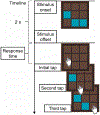
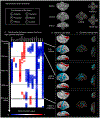
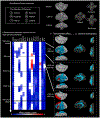
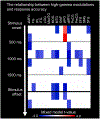
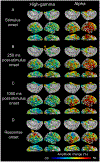

Similar articles
-
Corticocortical and Thalamocortical Changes in Functional Connectivity and White Matter Structural Integrity after Reward-Guided Learning of Visuospatial Discriminations in Rhesus Monkeys.J Neurosci. 2020 Oct 7;40(41):7887-7901. doi: 10.1523/JNEUROSCI.0364-20.2020. Epub 2020 Sep 8. J Neurosci. 2020. PMID: 32900835 Free PMC article.
-
Dynamic functional connectivity in verbal cognitive control and word reading.Neuroimage. 2024 Oct 15;300:120863. doi: 10.1016/j.neuroimage.2024.120863. Epub 2024 Sep 23. Neuroimage. 2024. PMID: 39322094 Free PMC article.
-
Intra- and inter-hemispheric network dynamics supporting object recognition and speech production.Neuroimage. 2023 Apr 15;270:119954. doi: 10.1016/j.neuroimage.2023.119954. Epub 2023 Feb 23. Neuroimage. 2023. PMID: 36828156 Free PMC article.
-
Development of a superior frontal-intraparietal network for visuo-spatial working memory.Neuropsychologia. 2006;44(11):2171-7. doi: 10.1016/j.neuropsychologia.2005.11.019. Epub 2006 Jan 6. Neuropsychologia. 2006. PMID: 16405923 Review.
-
Working memory dependence of spatial contextual cueing for visual search.Br J Psychol. 2019 May;110(2):372-380. doi: 10.1111/bjop.12311. Epub 2018 May 10. Br J Psychol. 2019. PMID: 29745430 Review.
Cited by
-
High-gamma modulation language mapping and cognitive outcomes after epilepsy surgery.Epilepsia. 2024 Oct;65(10):3052-3063. doi: 10.1111/epi.18096. Epub 2024 Aug 20. Epilepsia. 2024. PMID: 39162748
-
Dynamic Causal Tractography Analysis of Auditory Descriptive Naming: An Intracranial Study of 106 Patients.Neuroimage. 2025 Aug 15;317:121319. doi: 10.1016/j.neuroimage.2025.121319. Epub 2025 Jun 19. Neuroimage. 2025. PMID: 40516665 Free PMC article.
-
Visualization of functional and effective connectivity underlying auditory descriptive naming.Clin Neurophysiol. 2025 Jul;175:2010729. doi: 10.1016/j.clinph.2025.04.008. Epub 2025 Apr 21. Clin Neurophysiol. 2025. PMID: 40349545
References
-
- AlSkaif T, Dev S, Visser L, Hossari M, van Sark W. A systematic analysis of meteorological variables for PV output power estimation. Renew Energy 2020;153:12–22. 10.1016/j.renene.2020.01.150. - DOI
MeSH terms
Grants and funding
LinkOut - more resources
Full Text Sources
Research Materials

